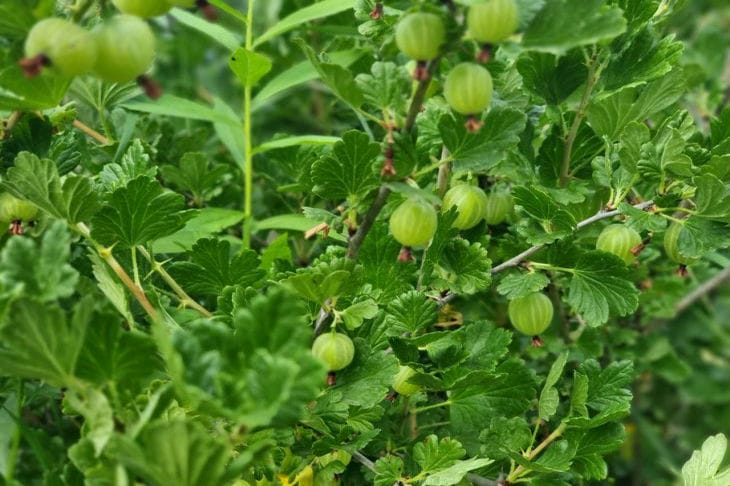Why Gooseberries Are Getting Smaller: Main Reasons and Solutions
Many gardeners face the problem when gooseberries become small
This is disappointing, because a healthy bush is expected to produce large and juicy fruits.
Understanding the reasons why gooseberries become smaller helps prevent this problem and ensure a good harvest. Anastasia Kovrizhnykh explains the main factors that affect the size of the berries and how to eliminate them.
Nutrient deficiencies
One of the most common reasons for gooseberry berries becoming smaller is a lack of nutrients in the soil.
Gooseberries require regular fertilization for full growth and fruiting. Lack of nitrogen, phosphorus and potassium negatively affects the size and quality of the berries. The plants begin to weaken, their growth slows down, and the fruits become small.

To provide gooseberries with all the necessary elements, it is important to regularly feed the bushes with complex fertilizers.
In the spring, nitrogen fertilizers are especially relevant, stimulating the growth of green mass. During the flowering and fruit formation period, phosphorus and potassium are necessary, promoting the development of the root system and the formation of large berries.
Incorrect watering
Lack of moisture is also one of the reasons for the berries becoming smaller. Gooseberries require regular and abundant watering, especially during periods of active growth and fruiting.
Irregular watering or over-drying of the soil leads to stress of plants, which affects the size of the fruits. However, over-watering is also harmful, as it can cause root rot and promote the development of diseases.
The optimal watering regime for gooseberries is to maintain constant soil moisture without stagnant water. It is important to consider weather conditions and soil type when planning watering. During dry periods, watering should be increased to provide the plants with the necessary amount of moisture.
Thickening of plantings
Planting gooseberry bushes too densely also affects the size of the berries. When plants are too dense, they begin to compete for light, water, and nutrients. This leads to weakening of the bushes and a decrease in the size of the fruit.
The optimal distance between gooseberry bushes should be at least 1-1.5 meters to provide each plant with sufficient light and nutrients.
Regular thinning and pruning of bushes helps to maintain optimal planting density. Pruning helps to improve air exchange and light penetration into the crown, which has a positive effect on the size and quality of berries.
Age of plants
Old gooseberry bushes often produce small berries. With age, the plants lose their ability to fully bear fruit, their growth slows down, and the fruits become smaller. The optimal period of productive fruiting of gooseberries is about 10-12 years. After this, the plants begin to age and require replacement.
To maintain the productivity of plantings, it is recommended to regularly renew the bushes. This can be done by cuttings or layering. Young plants provide larger and better quality fruits.
Diseases and pests
Diseases and pests can also be the cause of gooseberry berries becoming smaller. Fungal infections such as powdery mildew and anthracnose, as well as attacks by pests such as aphids and spider mites, weaken the plants. As a result, the bushes cannot fully develop and produce large fruits.
Regular inspection of plants and timely measures to combat diseases and pests help maintain the health of the bushes and ensure large berries.
The use of fungicides and insecticides, as well as biological control methods, helps protect plants from diseases and pests.
Incorrect pruning
Incorrect pruning of gooseberry bushes can also lead to a decrease in the size of the berries. Pruning plays an important role in the formation of the crown and stimulating the growth of new shoots.
However, too much or, conversely, too little pruning can have a negative impact on fruiting.
Optimal pruning involves removing old, damaged and thickening branches, as well as stimulating the growth of new fruit-bearing shoots.
Pruning should be done annually, in early spring before the sap starts to flow. It is important to maintain a balance between removing old branches and preserving young fruit-bearing shoots. This helps to ensure uniform fruiting and large berries.
Previously we talked about effective fertilizer for Ficus Benjamin.
